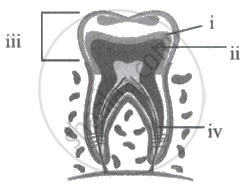Advertisements
Advertisements
Question
What is dental plaque? What harm can it do? How can the formation of plaque be prevented?
Solution
Dental plaque refers to a sticky, yellowish layer of food particles and bacterial cells that deposits on the teeth if they are not cleaned regularly. Dental plaque leads to tooth decay. Brushing of teeth regularly after eating food prevents the formation of plaque.
APPEARS IN
RELATED QUESTIONS
Which of the following component of our food is digested by an enzyme which is present in saliva as well as in pancreatic juice?
(a) proteins
(b) fat
(c) minerals
(d) carbohydrate
Why is there no enzyme to digest vitamins?
Fill in the blank.
Molars are meant for _____ the food.
Define the following term:
Digestion
Food are classified into three groups on the basis of the function they perform in our body. Name the three categories, and briefly give their functions. Also give their two sources each.
Name different steps involved in animal nutrition. Explain.
Name the enzymes secreted by the following: Salivary glands
Identify the labels i, ii, iii, and iv in the given diagram of tooth anatomy.

What are the functions of gastric glands present in the wall of the stomach?
Solve the crossword given in Figure 2.3.

| Across | Down | ||
| 1 | Cream-coloured digestive gland | 2 | Feeds with the help of pseudopodia |
| 3 | Undigested excretory solid residues | 6 | Total number of molars in one jaw of an adult |
| 4 | Organ that mixes saliva with the food | 8 | Largest gland |
| 5 | Point of defecation | 9 | Watery secretion in the mouth |
| 7 | Stored in gall bladder | 11 | A ruminant |
| 10 | Finger-like outgrowth in the small intestine | 12 | Form of food chewed by ruminants |
| 13 | Kind of taste buds | ||
| 14 | Kills bacteria in the stomach | ||
